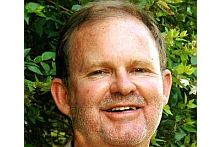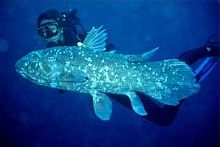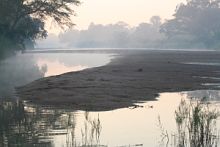SAEON HQ is M-O-V-I-N-G
|
SAEON's National Office is in the process of moving from central Pretoria to Persequor Techno Park, Scientia, 800 metres from the entrance gate to the National Research Foundation (NRF), of which it is a facility.
SAEON decided on the move as the location of its National Office in downtown Pretoria was deterring visitors from the scientific community. Thus the primary motivation for the move is to situate SAEON closer to the circuit of scientific activity - the move would bring SAEON within close proximity of the NRF, Department of Science and Technology (DST), Council for Scientific and Industrial Research, South African National Biodiversity Institute, Innovation Hub, University of Pretoria, Agricultural Research Council and the Council for Geosciences.
The move should be concluded at the end of February 2009.
Technical Steering Committee
SAEON would like to welcome two new members of the Technical Steering Committee, Mr Leluma Matooane from the DST and Mr Moloko Matlala from the Department of Water Affairs and Forestry. The Committee held a very constructive meeting in December last year to plan the way forward in 2009.
SAEON's organisational structure
The way in which SAEON is structured makes provision for receiving advice from stakeholders at all levels of the organisation. Nodes are hosted by external organisations, and the SAEON structure is thus widely distributed.
For these reasons, SAEON is referred to as "an institutionalised network". These characteristics give SAEON considerable resilience, which is a prerequisite for an organisation with its focus on long-term data and observations.
Three of the four nodes that are operational have already established node liaison committees, comprising participants in the nodes and advisors to the node managers. A node liaison committee for the Fynbos Node will soon be appointed.
SAEON budget
SAEON is grateful to be able to announce that its core budget from the DST in 2009 will be R15m. Once the full complement of nodes is operational (with the establishment of the Grasslands-Forests-Wetlands Node and the Arid Lands Node), the projected annual expenditure on nodes from this budget will be R12 million.
SAEON is gradually extending is funding base to enable it to fulfil its vision of being a network that taps into the resources of other organisations without taking over their roles and mandates, but filling a gap in building and strengthening environmental science within the National System of Innovation, and bringing individuals and organisations together in synergy. In addition to the core budget, approximately R2 million per annum is currently leveraged through external funding sources including competitive funding, compensation for work done, sponsorship from industry for the education outreach programmes, sponsorship from the Water Research Commission (WRC) and grants from the international programmes of the DST and NRF to attend conferences.
Furthermore, SAEON receives considerable sponsorship in kind that cannot be quantified in monetary terms, such as bench space on ships, participation of researchers on cruises, use of equipment, access to research sites (which means that SAEON does not need to buy land), office space and administrative services free of charge from some of the node hosts, and the time of committee members on a voluntary basis.
An example of SAEON's unique role in the National System of Innovation is that one of the node managers, Dr Angus Paterson, has taken on supervisory responsibility for the DST and South African Institute of Aquatic Biodiversity's African Coelacanth Ecosystem Project, since it is well aligned with SAEON objectives and generates data that are relevant to SAEON. However, this has had implications for the way in which the work of the SAEON Elwandle Node is structured, since some of the Node Manager's time is no longer available for SAEON-specific work. As a result increased responsibilities had to be given to support staff and postdoctoral students.
New developments in Observation Science
SAEON has been developing and reviewing its core scientific approach over the past 18 months. To date no significant deviations from the early scientific papers and documents have emerged from the approach followed by SAEON. The emphasis remains on drivers of change and critical analysis of whether observed change should be attributed to anthropogenic drivers or natural variability.
The core science plan aims to address the following themes: carbon and climate, biodiversity, biogeographical cycling and productivity, hydrological functioning and the fire regime. The inclusion of a theme on sediments and sedimentation is still under consideration.
Each of the nodes is busy developing its own science plan that is aligned with the core science plan, taking into account the different approaches and methods that may be required in the various node biomes and ecoregions. The core science plan is not intended to prescribe the approaches at the various nodes in any detail.
During the past six months SAEON staff members have been engaged in the Global Change Science Plan being developed by the DST, which would form the umbrella under which the SAEON core science plan would reside. SAEON therefore intends to release the core science plan only after the Global Change Science Plan has been officially adopted by the DST and is in the public domain. It is worth noting that SAEON's work fits perfectly into the theme of the Global Change Grand Challenge for South Africa.
The Technical Steering Committee has recommended a review of the "Design of SAEON" document. This will have to wait until the core science plan has been finalised, which will impact on the way in which SAEON is designed. There is, for instance, debate on whether the initial decision not to have a node on freshwater systems is still valid. The decision was taken early in SAEON's development, and water is currently rising in importance on the national agenda.
The "Design of SAEON" document also places considerable emphasis on core LTER-type sites. However, as the conceptualisation of SAEON evolved, we realised that sites (and associated studies) of that nature require considerable investment, for which South Africa neither has sufficient funds nor enough skilled personnel. Moreover, studies from core sites may not necessarily provide the required answers. Sometimes, short-term studies may be required, and rare events demand a reactive approach that is denied by core sites that consume all the available resources. In understanding whole ecosystems and ecosystem change, intensive studies from core sites may not provide sufficient information.
Information management
At present, the main stakeholders in the SAEON information system (apart from SAEON) are the CSIR and the Department of Minerals and Energy (DME). These parties need to reach agreement on the architecture, development path and development priorities for CoGIS, which is facilitated through a steering committee.
The future requirements of government departments (national, provincial and local) are not clear, and in relation to such partners and potential partners, SAEON promotes its willingness to engage, to exchange and share information and to support the expansion of a wide federation of portals. SAEON has communicated its intentions, commitment to international standards, services and policies in two position papers.
International organisations and data centres (for example, GEOSS, ILTER and GBIF) present a challenge as well as an opportunity to SAEON. They are well-funded in comparison with local initiatives, have fewer skills constraints and broader support bases. SAEON has little choice other than to align its systems development closely with such organisations, to the point of agreeing on architecture, requirements and specifications and undertaking to contribute small, high-quality portions of the total agreed requirement rather than attempting to cover the entire scope.
The danger of SAEON's not doing so, and pursuing its own path of systems development, is that its work may be overtaken by better-resourced international developments that render the efforts worthless. The scope of information management should be appropriate to the size and budget of the organisation and there is a need for SAEON to implement the conditions of the Spatial Data Infrastructure Bill in terms of the National Spatial Information Framework (NSIF).
SAEON Summit
In accordance with SAEON's new Standing Rules, the next two-day SAEON Summit will be held in 2010. Dr Wayne Twine of Wits Rural Facility - a member of both the SAEON Technical Steering Committee and the SAEON NDlovu Node Liaison Committee - has been elected as the chair of the Summit Steering Committee. The Summit should take place in the first half of 2010, before the Soccer World Cup.













